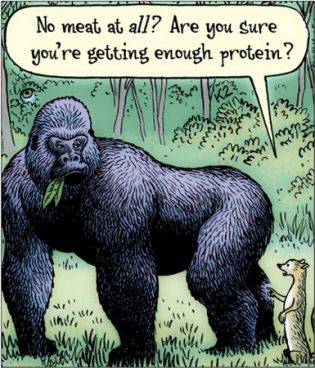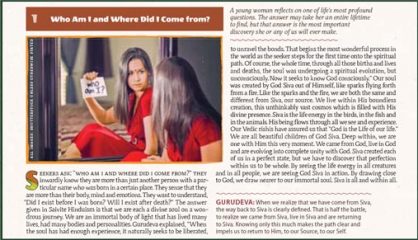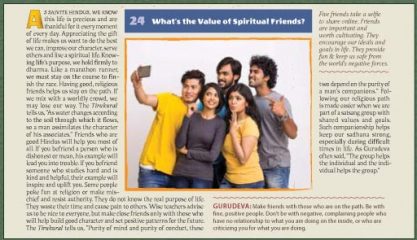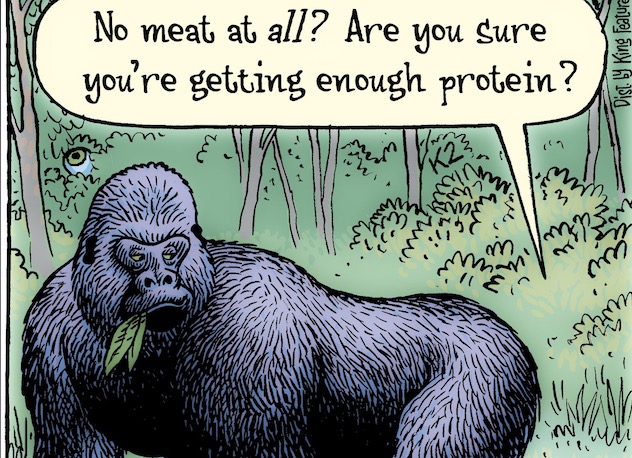This world is God fulfilled in outwardness
Sri Aurobindo
A spiritual person is one who looks into the realities of life and seeks to know “Who am I?” Swami Pratyabodhananda, disciple of Swami Dayananda Saraswati
If you can just appreciate each thing, one by one, then you will have pure gratitude. Even though you observe just one flower, that one flower includes everything. Shunryu Suzuki-roshi (1905-1971), Japanese Soto Zen master
I believe that every man who has ever been earnest to preserve his higher or poetic faculties in the best condition has been particularly inclined to abstain from animal food, and from much food of any kind. Henry David Thoreau (1817-1862), American author, poet and philosopher
The ignorance of the mind and the senses and the apparent futilities of human life are the material for the self-expression of that being, for its unfolding. Sarvepalli Radhakrishnan (1888-1975), first Vice President of India
Gratitude is the sweetest thing in a seeker’s life—in all human life. If there is gratitude in your heart, then there will be tremendous sweetness in your eyes. Sri Chinmoy (1931-2007), renowned spiritual leader and author
Humans live on one-quarter of what they eat; on the other three-quarters lives their doctor. Inscription in a Egyptian pyramid from around 3800 bce
The saint helped the scorpion over and over again and the scorpion each time returned a sting. Some said, “Do you not know it is the nature of the scorpion to sting?” And the saint replied, “It is my nature to save.” Saint Kabir (1440-1518), Indian saint
Realize that your world is only a reflection of yourself, and stop finding fault with the reflection. Attend to yourself; set yourself right, mentally and emotionally. Nisargadatta Maharaj (1897-1981), Hindu sage
Let yourself become that space that welcomes any experience without judgment. Tsoknyi Rinpoche, Nepalese Tibetan Buddhist monk
It is not in the outer world that you will find peace. Dig deep into yourself and you will find the priceless pearl. Anandamayi Ma (1896-1982), Bengali God-intoxicated mystic
Destroy wrong desires now; otherwise they will remain with you after the astral body has been separated from its physical casing. Every natural passion can be mastered. Swami Sri Yukteswar Giri (1855-1936), guru of Satyananda Giri and Paramahansa Yogananda
Down the millennia of its existence, Hinduism has made a priceless contribution to the collective religious life of mankind through the remarkable findings of her many brilliant mystics and philosophers, as set forth in a voluminous literature. Perhaps, however, her most significant contribution is the persistent, unshakable belief that union with the Divine is attainable while one is still on Earth. Nancy Wilson Ross (1901-1986), American novelist
To see form and hear sound but not be clouded by them is liberation. Bodhidharma
Every moment of your waking life is a chance to make spiritual progress. Satguru Bodhinatha Veylanswami, publisher of Hinduism Today
Never allow yourself to be complacent in your spiritual attainments. Always continue to strive. Even rishis, swamis and yogis who have totally realized Parasiva continue to work on themselves from within themselves. Satguru Sivaya Subramuniyaswami (1927-2001), founder of Hinduism Today

DID YOU KNOW?
Harappa’s Complex System of Weights
FOUR MILLENNIA AGO, THE CITIES OF the Indus-Sarasvati civilization shared a precise system of weights for trade and taxation. More than five hundred of the highly standardized weights have been discovered, in big towns and small villages alike. Most are made from chert, a fine-grained sedimentary rock. The weights were used on terra-cotta balance scales.
Famed archeologist Jonathan Mark Kenoyer states in his book Ancient Cities of the Indus Valley Civilization: “The cubical stone weights are based on a complex system of measurements that is calculated by both binary and decimal increments. The first seven Indus weights double in size from 1:2:4:8:16:32:64 [photo right], and the most common weight is the 16th ratio, which is approximately 13.7 grams [about half an ounce]. At this point, the weight increments change to a decimal system where the next largest weights have a ratio of 160, 200, 320 and 640. The next jump goes to 1,600, 3,200, 6,400, 8,000 and 12,800. The largest unit found at the site of Mohenjo-Daro weighs 10.865 kilos (approximately 25 pounds). Every excavated site of the Indus Valley has turned up such cubical chert weights, and all of the weights conform to the standard system established by the Indus rulers.”
Kenoyer adds, “The standardized Indus weights are unique in the ancient world and do not correspond to any of the numerous varieties of weights used in Mesopotamia or Egypt. However, the Indus weight system is identical to that used by the first kingdoms of the Gangetic plain about 300 bce and is still in use today in traditional markets throughout Pakistan and India.”
This weight system and the Indus decimal system of measurement appear to be early examples of the decimal system of counting in use today, one of India’s important contributions to the world.
BASICS
What Is the View of Monistic Theism?
From Sivaya Subramuniyaswami’s Dancing with Siva
MONISTIC THEISM IS THE SYNTHESIS of monism and dualism. It says God is transcendent and immanent, eternal and temporal, Being and becoming, Creator and created, Absolute and relative, efficient and material cause.
Both strict monism and dualism are fatally flawed, for neither alone encompasses the whole of truth. In other words, it is not a choice between the God-is-man-and-world view of pantheistic monism and the God-is-separate-from-man-and-world view of theistic dualism. It is both. Panentheism, which describes “all in God, and God in all,” and monistic theism are Western terms for Advaita Ishvaravada. It is the view that embraces the oneness of God and soul, monism, and the reality of the Personal God, theism. As panentheists, we believe in an eternal oneness of God and man at the level of Satchidânanda and Paraßiva. But a difference is acknowledged during the evolution of the soul body. Ultimately, even this difference merges in identity. Thus, there is perfectly beginningless oneness and a temporary difference which resolves itself in perfect identity. In the acceptance of this identity, monistic theists differ from most vißish†âdvaitins.
The Vedas declare, “He moves and He moves not; He is far, yet is near. He is within all that is, yet is also outside. The man who sees all beings in the Self and the Self in all beings is free from all fear.”




Hardcover, ISBN 978-1-934145-72-2, $25.00
Also in popular e-book formats
Available at:
himalayanacademy.com/view/path-to-siva

Sixty-eight lessons based on Satguru Sivaya Subramuniyaswam’s Master Course Trilogy for passing our tradition on to the next generation, and the next…
Path to siva presents all of the important teachings of the Saivite religion. It is written with youth in mind, but is also ideal for anyone wanting a condensed version of Gurudeva’s 3,000-page Master Course. Each illustrated lesson is short—just one or two pages—but packed with information. Here our youth can find answers to questions about God, Lord Ganesha, Lord Murugan and the devas—how they can help us in our lives and how to contact them through temple worship and home puja. You will find clear explanations of karma, dharma and reincarnation, and how to use japa, meditation and affirmations to make your life better. You will learn the best ways to live in order to achieve your most important goals. The lessons include insights on home life, getting along with others, religious tolerance, vegetarianism and caring for the environment. They cover challenging philosophical areas, like death and dying, sin and evil. These short essays will provide a clear understanding of Hindu practices, beliefs and philosophy and give you a deep comprehension of life that few people have. The book was designed as a tool for teachers and for parents with youth, a focus text for exploring Hinduism together. Discussing one lesson a week can keep the family conversation going for more than a year.

